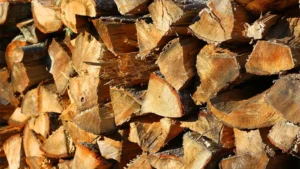How to Grow and Care for Scarlet Oak Trees: Proven Success Strategies
- May 4, 2024
- 0 comment
Learn how to grow and care for Scarlet Oak trees with proven success strategies. Expert advice for optimal growth and health. If you’re looking to grow Scarlet Oak trees, you’ve come to the right place. Our guide covers everything you need to know, from the basics of planting to the ins and outs of tree care.

Whether you’re just starting out or have some experience, you’ll find practical tips on how to keep your trees healthy and thriving. Let’s get started!
Table of Contents
- Understanding Scarlet Oak Trees
- Site Selection and Preparation
- Optimal Planting Times for Scarlet Oak Trees
- Planting Your Scarlet Oak
- Watering and Nutrition
- Pruning and Maintenance
- Seasonal Care for Scarlet Oak Trees
- Troubleshooting Common Problems
- Long-Term Health and Growth Monitoring
- Conclusion
- FAQs
Understanding Scarlet Oak Trees

Scarlet Oaks (Quercus coccinea) are a prominent species in the deciduous forests of the eastern United States. Renowned for their vivid red autumn leaves, these trees are a dynamic component of their ecosystems, offering more than just visual appeal.
Growth and Structure: Scarlet Oaks are known for their rapid growth under optimal conditions and their ability to reach heights of 70 to 100 feet. They typically have a trunk diameter of 2 to 3 feet. Their bark, which develops deep ridges and furrows with age, varies from light gray to darker shades, providing camouflage for various native species.
Ecological Impact: These trees play a crucial role in their habitats by providing food and shelter for wildlife. The acorns of Scarlet Oaks are a vital food source for several bird species, including jays, pigeons, ducks, and several mammals like squirrels and deer. During the fall, the leaf litter from these trees significantly contributes to the forest’s nutrient cycle, enriching the soil.
Photosynthetic Rates: Scarlet Oaks have a high photosynthetic capacity, especially during the peak growing season. Their leaves’ average photosynthetic rate can reach up to 18 µmol m^-2 s^-1, which is relatively high for deciduous trees, contributing to their rapid growth and vibrant foliage.
Soil and Sunlight Requirements: Scarlet Oaks prefer acidic soils with a pH ranging from 4.5 to 6.5. They are adaptable to different soil types as long as the soil is well-drained. Full sunlight is crucial for optimal growth and the development of the characteristic red fall foliage. Under shaded conditions, their growth rate slows significantly, and the coloration may not be as intense.
Key Attributes of Scarlet Oaks
| Characteristic | Detail |
|---|---|
| Scientific Name | Quercus coccinea |
| Average Height | 70-100 feet |
| Growth Rate | 24 inches/year |
| Leaf Size | 4-7 inches long, 4 inches wide |
| Preferred Soil pH | 4.5-6.5 |
| Sunlight Requirement | Minimum 6 hours of direct sunlight |
| Wildlife Benefits | Habitat and food for birds and mammals |
| Lifespan | Up to 300 years |
| Tolerance | High wind resistance, moderate pest resistance |
Site Selection and Preparation
Choosing the Right Location: Selecting an optimal location is fundamental to the health and growth of Scarlet Oak trees. These trees require full sun, defined as at least six hours of unfiltered daily sunlight, to develop their best fall color and maintain health. When considering space, keep in mind that Scarlet Oaks can grow to significant heights of 70 to 100 feet with a spread of 40 to 50 feet at maturity.
Therefore, choose a spot where the tree has ample room to expand both vertically and horizontally. Avoid planting near structures or power lines, and ensure the selected area is free from underground utilities, such as water lines or septic systems, which could be disrupted by the tree’s extensive root system.
Analyzing Soil Conditions: Before planting, conduct a thorough analysis of the soil conditions. Scarlet Oaks prefer acidic to neutral soil with a pH range of 4.5 to 6.5. Use a soil testing kit available from garden centers or extension services to determine your soil’s pH level. This tree species is adaptable to various soil types but thrives in well-drained, loamy soils rich in organic matter.
Amending the Soil: If your soil test indicates poor drainage or the wrong pH, make the necessary adjustments before planting. To increase soil acidity, amendments like sphagnum peat or elemental sulfur can be mixed into the soil. For improving drainage in clay-heavy soils, incorporate organic materials such as compost, aged manure, or coarse sand, which enhance soil structure and nutrient availability.
Preparing the Planting Site: Once the location is chosen and the soil properly analyzed and amended, prepare the planting area:
- Clear a wide area around the planned planting spot of all weeds, turfgrass, and debris. This reduces competition for water and nutrients and minimizes the risk of disease transfer from existing plants.
- If dealing with compacted soil, break up the top 12 to 18 inches of soil with a rototiller or garden fork, which will facilitate root growth and water penetration.
Environmental Considerations: Assess environmental factors such as wind exposure and water availability. In regions with strong winds, young trees may require staking after planting to prevent tilting or root damage. Additionally, consider accessibility for watering, especially during the tree’s establishment phase and periods of drought.
Optimal Planting Times for Scarlet Oak Trees

When to Plant: The timing of planting is a pivotal factor in the successful establishment and subsequent health of Scarlet Oak trees. To ensure the best start for your Scarlet Oaks, consider the following detailed timing recommendations:
Spring Planting: Early to mid-spring is an ideal time to plant Scarlet Oaks. Planting after the last frost date but before the onset of warm summer temperatures allows the tree to establish roots in the cool, moist soil. This period provides a gentle environment for young trees, enabling them to strengthen and develop a robust root system before the heat of the summer stresses the plant.
Fall Planting: Late summer to mid-fall, several weeks before the first frost, is another excellent planting window. During this time, the soil is still warm, which promotes root growth, but the cooler air temperatures reduce the evaporation of soil moisture and lessen the stress on the tree. Fall planting also has the added benefit of upcoming winter rains, which can help keep the soil moist and reduce the need for manual watering.
Advantages of Optimal Timing:
- Reduced Stress: Planting in moderate temperatures reduces stress on the Scarlet Oak, making it more likely to thrive. High summer temperatures can lead to evaporation of essential moisture and increase the likelihood of stress-related diseases.
- Improved Water Availability: Spring and fall typically have more consistent rainfall patterns in many regions, which helps keep the soil adequately moist and supports new root growth.
- Better Root Development: Cooler temperatures in spring and fall encourage root growth without the competing energy demands of leaf production, which is more prevalent in spring. This strong root system is crucial for the tree’s overall health, anchoring it securely and allowing it to absorb water and nutrients more effectively.
Considerations for Regional Climates:
- In colder northern climates, aim to plant in early spring as the ground thaws or during the early part of fall to ensure that the tree has enough time to establish before freezing temperatures set in.
- In warmer southern climates, fall planting is particularly beneficial as it allows a longer period for establishment before the typically hot and dry conditions of summer.
Planting Your Scarlet Oak
Step-by-Step Planting Guide:
- Select the Right Spot: Choose a location that gets at least six hours of direct sunlight daily and has plenty of room for the tree to grow. Avoid areas close to buildings, power lines, and underground utilities.
- Prepare the Site:
- Clear the area of weeds, rocks, and debris.
- Test the soil pH to ensure it falls within the 4.5 to 6.5 range, which is ideal for Scarlet Oaks.
- Amend the soil if necessary. If the soil is too dense or clayey, mix in organic compost or aged manure to improve drainage and nutrient content.
- Dig the Hole:
- The hole should be as deep as the root ball of your Scarlet Oak but twice as wide. This allows room for the roots to expand without stress.
- Keep the soil you have removed nearby to backfill the hole.
- Plant the Tree:
- Before placing the tree in the hole, hydrate the root ball by soaking it in water for about 30 minutes if it’s particularly dry.
- Carefully remove the tree from its container or unwrap it if it’s balled and burlapped. Inspect the roots and gently loosen any that are tightly bound.
- Place the tree in the center of the hole. Ensure it’s standing straight. The top of the root ball should be level with the ground surface.
- Backfill the Hole:
- Fill the hole with the original soil. As you refill, gently tamp the soil around the root ball to remove air pockets.
- Avoid compacting the soil too much; this can hinder water penetration and root growth.
- Water the Tree:
- After planting, water the tree thoroughly to settle the soil and eliminate any remaining air gaps. This initial watering is crucial for helping the roots make contact with the surrounding soil.
- Continue to water the tree deeply once a week for the first few months until it is established.
- Mulch the Base:
- Apply a 2-3 inch layer of organic mulch around the base of the tree, extending out to the drip line. This helps retain soil moisture and suppress weeds.
- Keep the mulch a few inches away from the trunk to prevent moisture accumulation that can lead to fungal diseases.
- Staking the Tree (if necessary):
- If the tree is tall and thin or the site is exposed to strong winds, staking may be necessary during the first year. Use stakes placed outside of the root area and soft ties that won’t damage the trunk.
Watering and Nutrition

Watering Your Scarlet Oak: Proper watering is essential for the health of newly planted Scarlet Oak trees and their continued growth. Here are detailed recommendations for watering:
- Initial Watering: Immediately after planting, water the tree deeply to ensure that the moisture reaches the root zone. This initial watering helps settle the soil around the roots and removes any air pockets.
- Regular Watering Schedule: For the first two years, water your Scarlet Oak weekly unless there is significant rainfall. Each watering session should moisten the soil to a depth of 12 inches to encourage deep root growth. As the tree matures, it will require less frequent watering, but always ensure the tree receives adequate hydration, especially during prolonged dry spells.
- Adjustments for Climate: In areas with hot, dry summers, additional watering may be necessary to keep the soil moist. Conversely, in cooler or rainy climates, reduce the frequency of watering to prevent waterlogging, which can lead to root rot.
Nutrition Requirements: Scarlet Oaks generally require minimal fertilization, but providing them with the right nutrients can promote healthy growth.
- Fertilizing Young Trees: Apply a balanced, slow-release fertilizer in the spring as new growth appears. This supports vigorous growth and helps establish a strong structure.
- Ongoing Nutrition: After the first few years, reduce fertilization frequency. Conduct a soil test every few years to determine specific nutrient needs. Only apply fertilizer if the test indicates a deficiency or if growth seems stunted.
- Organic Options: To improve soil fertility naturally, consider adding compost around the base of the tree annually. This not only supplies nutrients but also enhances soil structure and moisture retention.
Pruning and Maintenance

Pruning Your Scarlet Oak: Pruning is crucial not only to maintain the shape and health of your Scarlet Oak but also to ensure its structural integrity as it grows.
- When to Prune: The best time to prune Scarlet Oak trees is in late winter or early spring before new growth starts. This timing reduces the risk of pest infestations and disease entry through cuts.
- Pruning Techniques: Remove any dead, damaged, or diseased branches first. Thin out areas with dense growth to allow light and air to penetrate the canopy, which helps reduce the risk of disease. Avoid heavy pruning; instead, focus on maintaining a natural, balanced shape.
- Special Considerations: If you notice any branches forming narrow, weak angles, prune these early to prevent potential hazards as the tree matures. Also, be mindful of removing lower branches if necessary to facilitate mowing or walking under the tree.
Routine Maintenance Checks: Regularly inspect your tree for signs of pests or disease. Early detection and treatment can prevent minor issues from becoming major problems. Clean up fallen leaves and debris around the tree to minimize the risk of fungal diseases.
Seasonal Care for Scarlet Oak Trees
Caring for Scarlet Oaks requires an understanding of their needs throughout the year. Each season brings specific tasks to ensure the tree’s vitality and longevity.
Spring:
- Begin the season by inspecting the tree for any signs of damage or disease that may have occurred over the winter. Clean around the base, removing any debris and dead leaves that could harbor pests or diseases.
- Refresh the mulch around the tree, keeping it a few inches away from the trunk to prevent rot. Spring is also the time to apply a balanced fertilizer to support the growth spurt that occurs as the weather warms.
Summer:
- Summer care is predominantly about maintaining adequate moisture. Water deeply and regularly, especially during hot, dry spells, to prevent stress and leaf scorch.
- Keep an eye out for pests common to Scarlet Oaks, such as oak gall wasps and borers. Early detection and treatment are key to managing these issues effectively.
Fall:
- As the tree prepares for dormancy, reduce watering to help harden it off. This is a good time to apply a light layer of compost around the base for added nutrients over the winter months.
- If necessary, do minor pruning to remove any dead or diseased wood. This helps prevent damage in the winter from snow and ice accumulation.
Winter:
- In areas with severe winters, consider wrapping the trunk with tree wrap to protect it from extreme cold and frost cracks.
- Although growth is dormant, it’s important to occasionally check the tree for signs of distress or unexpected pest activity.
Troubleshooting Common Problems

Recognizing and addressing issues early can make a significant difference in the health of your Scarlet Oak. Here are some common challenges and how to manage them:
Leaf Discoloration:
- Cause: Often caused by nutrient deficiencies or watering issues.
- Solution: Adjust watering practices and ensure the soil is well-nourished. A soil test can help identify specific nutrient deficiencies.
Bark Damage:
- Cause: Physical damage from lawn equipment or pests can lead to bark injuries.
- Solution: Protect the tree base with mulch and consider using physical barriers. Treat pest infestations promptly.
Stunted Growth:
- Cause: Usually linked to root problems, poor soil conditions, or inadequate watering.
- Solution: Review watering practices and soil quality. Consider aerating the soil to improve water and nutrient uptake.
Pests and Diseases:
- Pests: Common pests include borers and scale insects.
- Diseases: Fungal infections like powdery mildew and oak wilt.
- Management: Regular monitoring, maintaining tree vigor, and proper sanitation practices can help manage these issues. Consult a professional if infestations or diseases are severe.
Long-Term Health and Growth Monitoring
Maintaining the health and monitoring the growth of your Scarlet Oak over the years is crucial for ensuring its longevity and vitality. Here’s how to keep your tree in top condition:
Regular Health Checks:
- Perform seasonal visual inspections to check for any signs of disease or pest infestation. Look for changes in leaf color, unusual leaf drop, or dieback in the canopy.
- Keep an eye on the growth patterns of your tree. A healthy Scarlet Oak should show consistent growth in height and canopy spread. Slowed growth can be a sign of underlying health issues.
- Conduct soil tests every few years to determine if the soil still meets the nutrient requirements of your tree. Adjustments may be needed based on the results to ensure your tree continues to receive optimal nutrition.
Adjusting Care Strategies:
- As your Scarlet Oak matures, its watering needs will change. Mature trees are typically more drought-resistant but may need extra watering during unusually dry periods.
- As the tree grows, pruning becomes essential not only for aesthetics but also for safety. Remove any branches that pose a risk due to size or damage, and thin the canopy as needed to allow for sunlight penetration and air circulation.
Preventive Measures:
- Continue to apply organic mulch around the base of your tree, which helps retain soil moisture, suppress weeds, and provide nutrients as it decomposes.
- Be proactive in managing diseases by cleaning up fallen debris and avoiding overhead watering to reduce the likelihood of fungal diseases.
Related Post
- How to Fertilize a Mango Tree Effectively: Tips and Tricks for Healthy Growth
- How to Fertilize Apple Trees: Essential Tips for a Bountiful Harvest
- How to Fertilize Lemon Trees: Secrets for Thriving Citrus
- How to Fertilize Avocado Tree: A Step-by-Step Guide for Lush Growth
- How to Fertilize Bougainvillea: A Complete Guide for Stunning Blooms
Conclusion
Growing and caring for a Scarlet Oak tree is a rewarding endeavor that enhances any landscape with its majestic presence and stunning fall color. By following the proven success strategies outlined in this guide—from selecting the right planting location and properly caring for the tree throughout the seasons to monitoring its health and adjusting care as it grows—you can ensure that your Scarlet Oak thrives for many years to come.
FAQs
- What specific soil amendments can enhance the growth of Scarlet Oak trees?
Scarlet Oaks thrive in acidic to neutral soil. To adjust soil pH or improve nutrient content, consider adding organic compost, aged manure, or specific soil amendments like sulfur to lower pH or limestone to raise it. These amendments help improve drainage and provide essential nutrients. - How can I protect young Scarlet Oak trees from frost damage?
To protect young trees from frost, mulch generously around the base to insulate the root zone. Additionally, consider using burlap wraps around the trunk during the coldest months to shield the tree from harsh winds and temperature dips. - Is there an ideal companion plant for Scarlet Oak trees that could enhance their growth?
Underplanting Scarlet Oaks with native shrubs or perennial ground covers can benefit the trees by maintaining soil moisture and adding biodiversity. Plants like wild ginger or ferns are ideal as they thrive under the same light and soil conditions. - Can pruning affect the fall coloration of Scarlet Oak leaves?
Pruning does not directly affect the fall color but can indirectly enhance it by improving the tree’s health and vitality, which leads to better leaf quality. Prune during late winter or early spring to remove dead or overcrowded branches. - What are the signs that a Scarlet Oak is not receiving enough water?
Signs of water stress in Scarlet Oaks include wilting leaves, dry and brittle branches, and leaves that turn brown at the edges or drop prematurely. Ensure consistent watering, especially during dry spells, to prevent these symptoms. - How can I tell if my Scarlet Oak tree is getting too much fertilizer?
Over-fertilization can lead to rapid, weak growth that makes the tree prone to diseases and branch breakage. Signs include yellowing leaves, salt buildup on the soil surface, and a decrease in flowering or leaf production. - What specific pests should I monitor for in Scarlet Oak trees, and how can I manage them organically?
Common pests include oak gall wasps and borers. For organic management, encourage natural predators like birds and beneficial insects. Applying neem oil or insecticidal soap can also help manage smaller infestations. - Are there any specific symptoms of nutrient deficiencies I should watch for in my Scarlet Oak?
Look for stunted growth, chlorosis (yellowing of leaves), and early leaf drop. A soil test can confirm nutrient deficiencies, and appropriate supplementation can be made based on the test results.
We hope this guide empowers you to confidently grow and nurture your Scarlet Oak trees. Remember, the right care and attention can lead these majestic trees to thrive for generations. Happy gardening!

Benjamin Brooks
Forestry AuthorGreetings! I'm Benjamin Brooks, and my journey over the past 15 years has revolved around the fascinating realms of content creation, expertise in snow clearing, and the intricate world of lumberjacking and landscaping. What began as a simple curiosity about the natural world and heavy machinery has evolved into a passionate profession where my love for crafting words intertwines seamlessly with my lumberjacking and garden skills.













Leave your comment